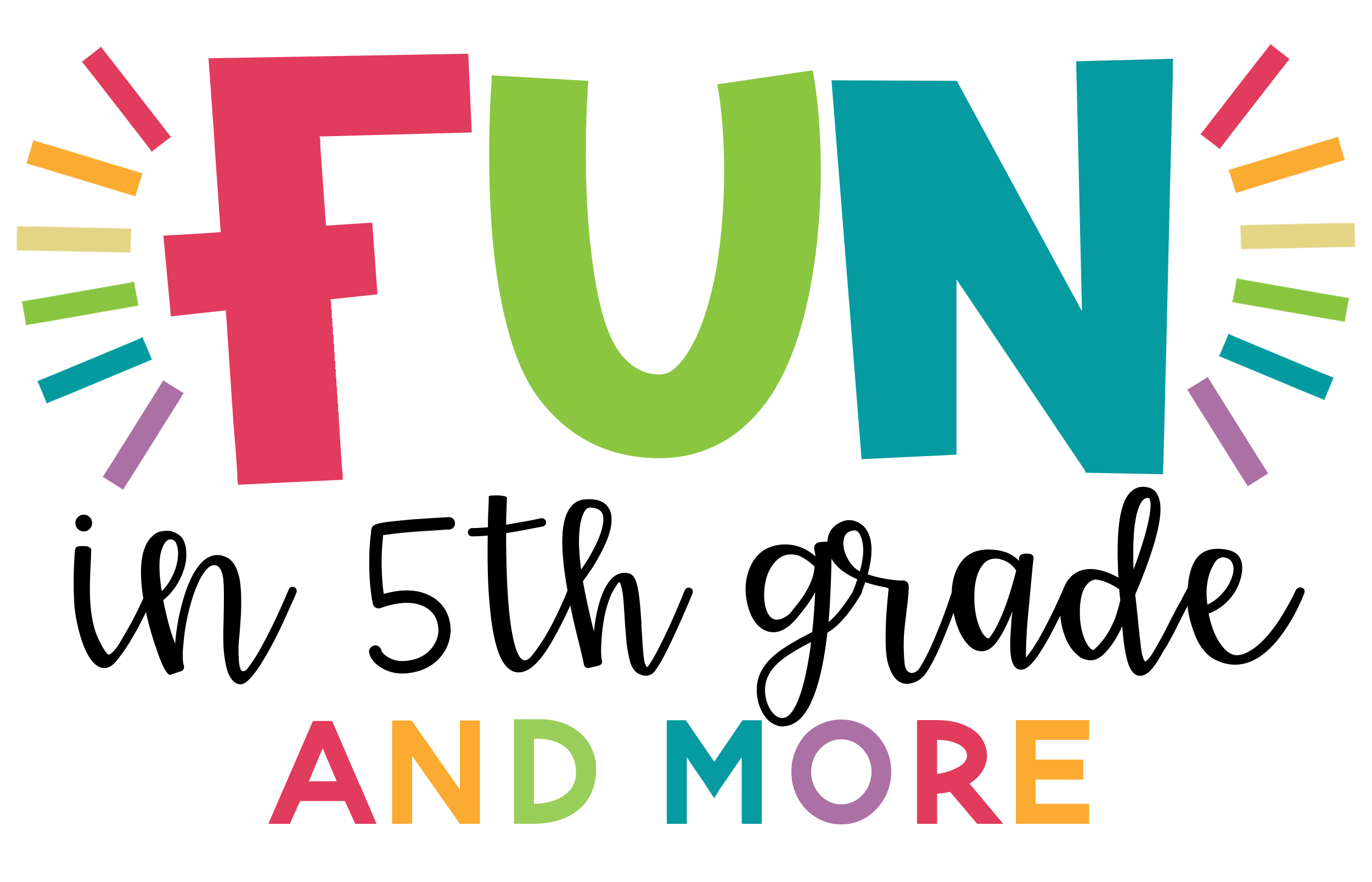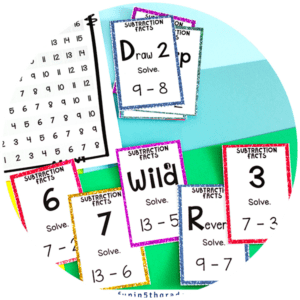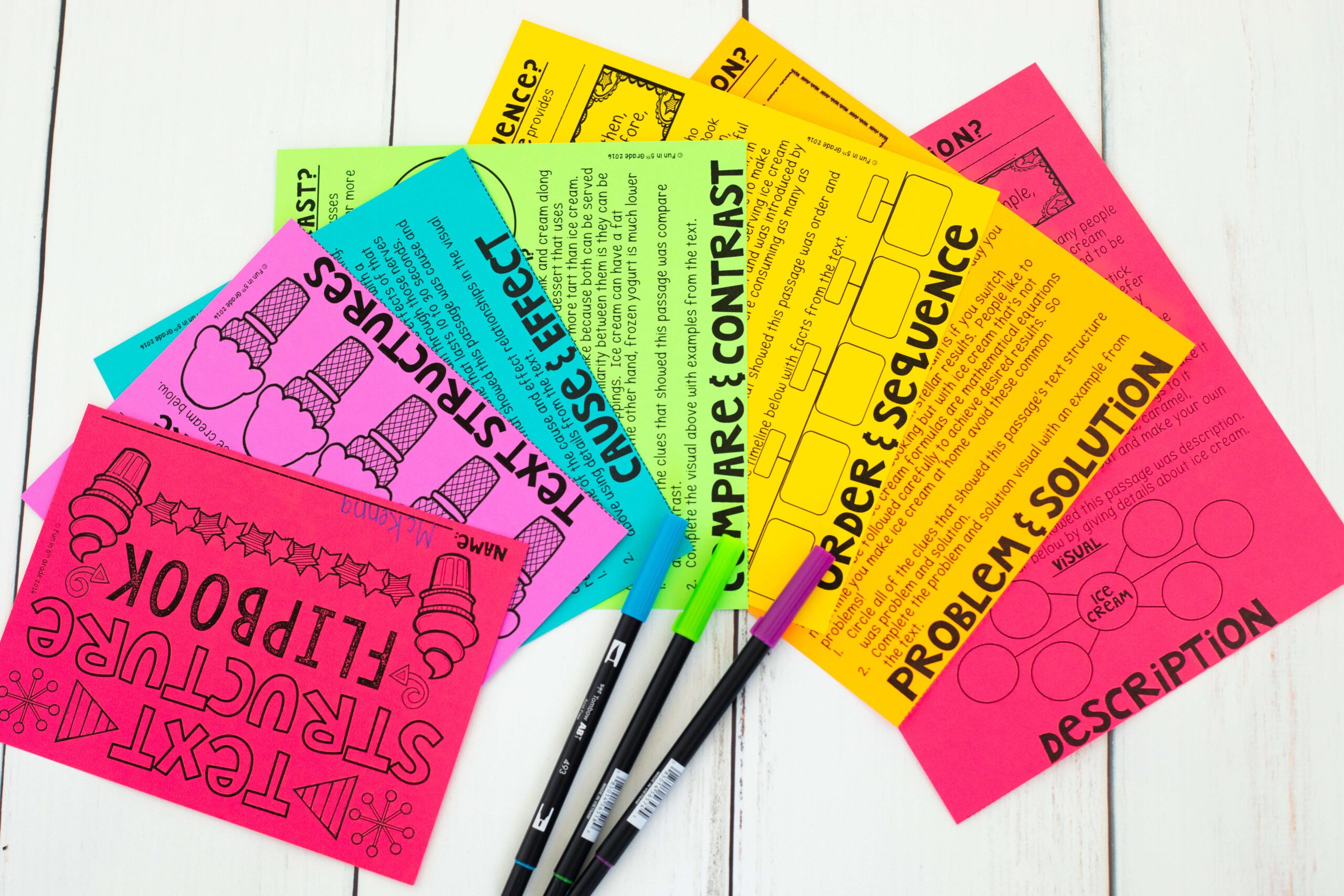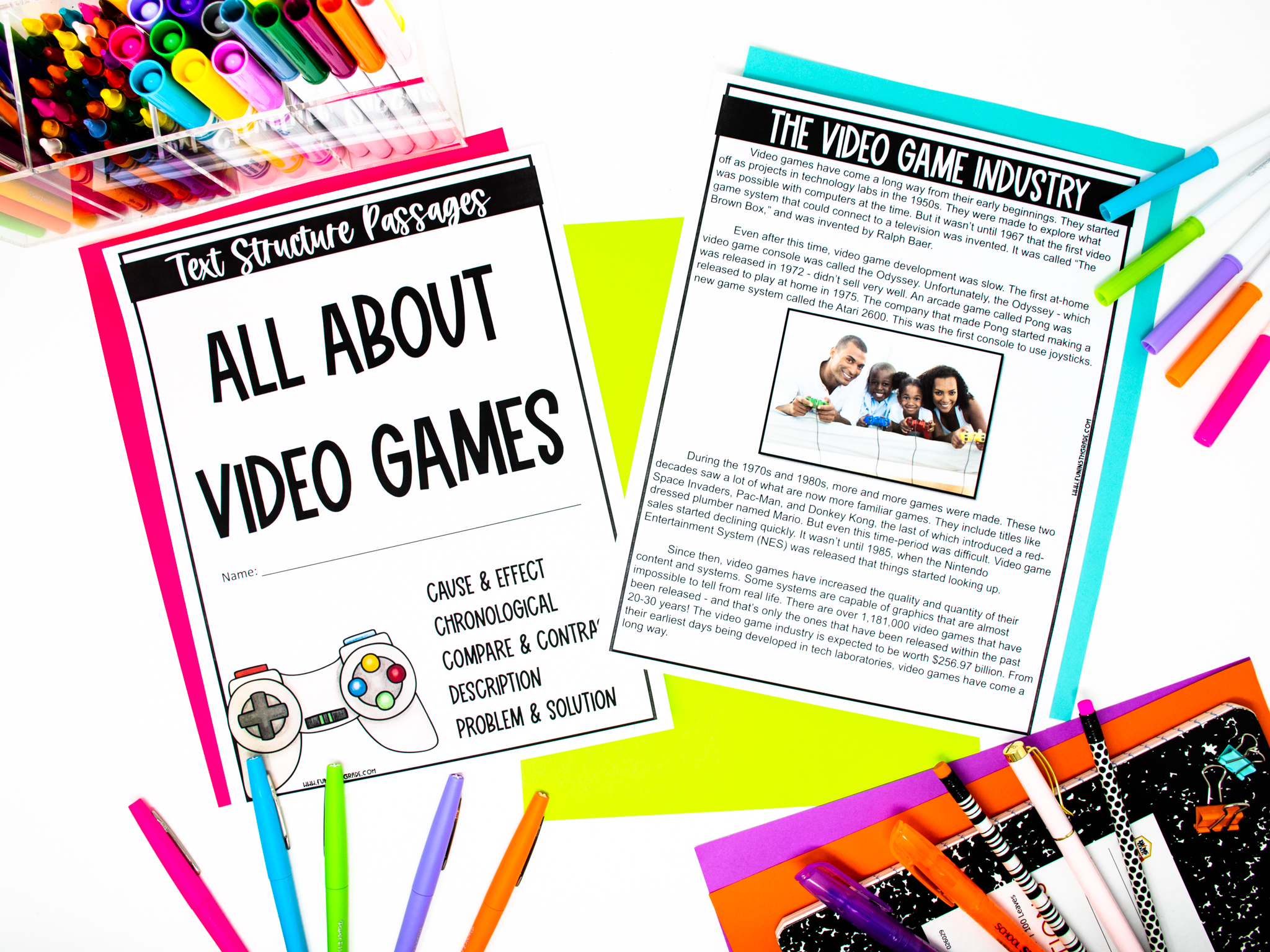Today we are going to address one of the big dogs of upper elementary reading education…introducing text structure.
When I think about reading comprehension, I frequently consider the skills taught to be like a ladder. In education, we typically use the term ‘scaffolding’ when talking about supporting students as they ascend toward understanding, but I think a ladder is much more appropriate because who wants to construct all that scaffolding? I guess we could use an elevator or escalator, but that suggests that we can take shortcuts, and learning to read is not a place for taking shortcuts. No…I think for our purposes, a ladder works very nicely.
Rung by rung, we construct a ladder of tools and skills to help students understand what they read, and many of those rungs will be constructed and reinforced in upper elementary.
Text structure is a mid-level rung on the reading comprehension ladder. There are skills (like learning sight words and understanding sentence structure) that are lower on the ladder, and skills (like figurative language and theme development) that are higher up the ladder.
Now, it seems that text structure should be easy because there are only so many options to choose from. In my classes and in all the activities we’ve created at Fun in 5th Grade on this topic, we focused on just 5 types of text structure:
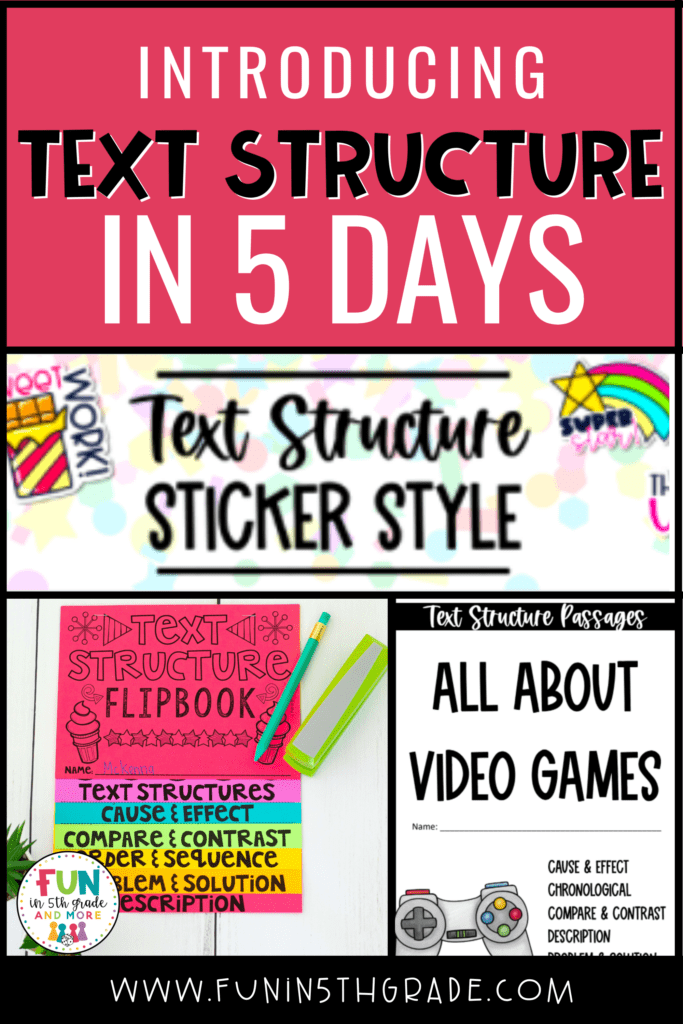
- Cause and Effect: tells what happened and why it happened.
- Compare and Contrast: discusses similarities and differences between two or more subjects
- Order and Sequence: provides details of events in the order in which they happened.
- Problem and Solution: provides details about an issue and offers ways to solve it.
- Description: provides many details or characteristics on a specific topic.
So, if students only have 5 choices, why do they struggle so hard with this topic? It’s the same reason people struggle with multiple-choice tests. You have to have a good foundation of the topic to be able to narrow down the options and make good, educated decisions.
Today, we are going to spend some time talking about setting a firm foundation for discussing text structure in the classroom. We want to make sure *that* rung of the ladder is firmly in place and ready to support our students as they climb.
Introducing Text Structure in 5 Days
Text structure is a really big topic, but a good solid introduction to text structure can take place with just five days of focus. Over these 5 days, we will introduce students to the vocabulary, examples, and cue words.
Day 1| Pre-assess
When it comes to text structure, we have to begin by figuring out what we’re working with because, depending on our students’ vocabulary development and access to reading, their knowledge of text structure can vary greatly. So, we’ll want a good formative assessment at the beginning of the learning process…just to see how deep to dig.
We strongly recommend using a pre-assessment that is self-checking for this part of the process. When students are provided with the opportunity to re-work a problem, they are provided the opportunity to learn. We have some Google Form Sticker Activities for text structure that would work really well as pre-assessments.
To enhance the preassessment, instruct students to take notes as they work through the self-checking activity.
Students may start to notice patterns as they work. Label the note sheet with simple questions like…“What do you notice about the passages that are examples of cause and effect?”
Give students an opportunity to observe and learn through this process!
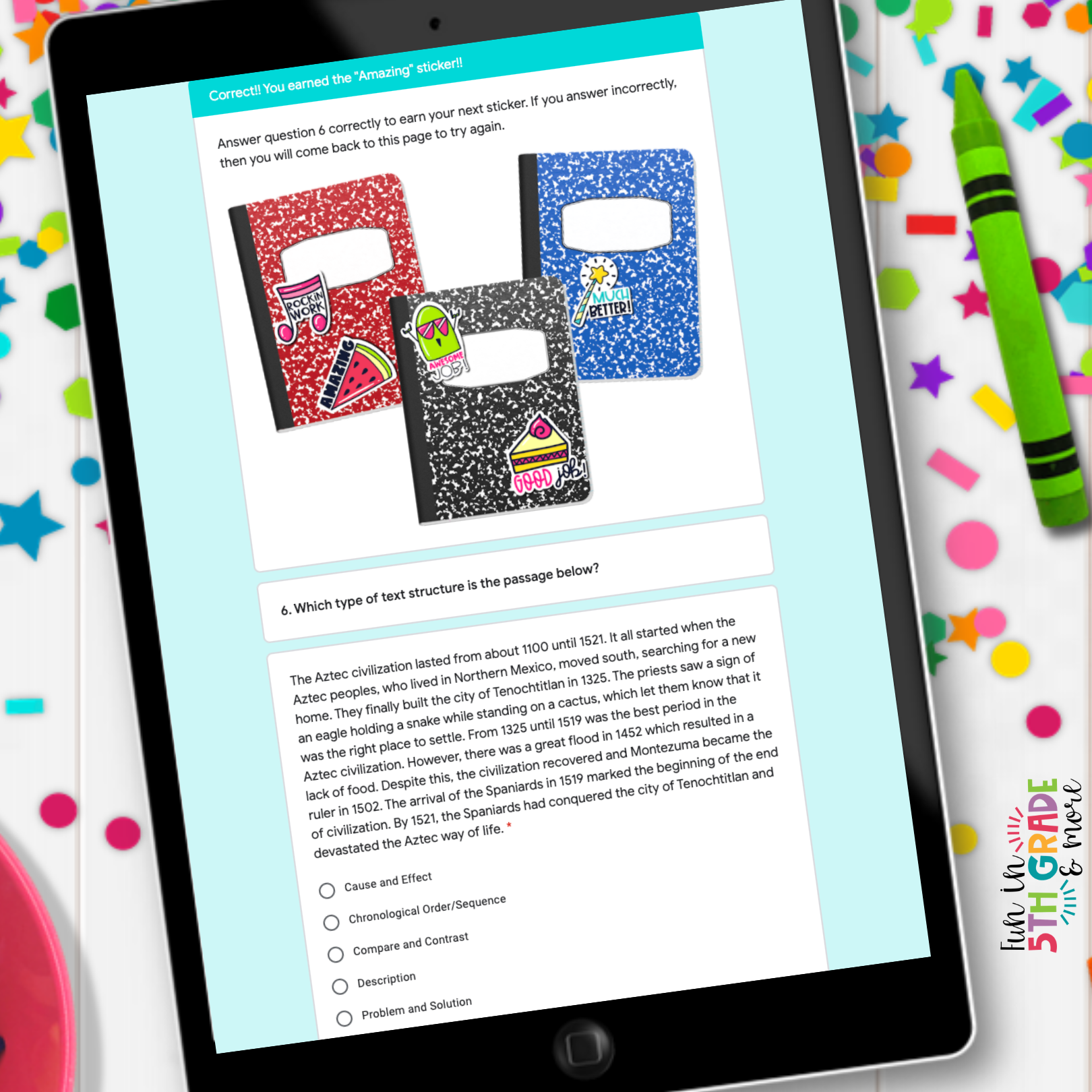
Day 2 | Introduce Vocabulary
On day 2, it’s time to formally introduce text structure vocabulary.
As you consider different ways to do this, try to find activities to make it fun! Consider using some of the suggestions from this blog post, but one of the best resources I can suggest is the Text Structure Flipbook because it will allow students to have the different types, definitions, and examples easily accessible as they continue to learn.
Before getting into creating the flipbook, let students share any information they’ve gathered from the pre-assessment on day 1. To do this, you can create 5 columns on the board or put up large posters (one for each type of text structure). Then split students into small groups to look over any notes they took during the pre-assessment. Have them compile their notes onto sticky notes that they can then place in the spaces dedicated to each type of text structure.
Using the wisdom gained from the students’ notes, begin constructing the flipbooks.
When first introducing the flipbook, don’t create the whole thing. Start by going through definitions and types. Use the students’ notes to determine if your students have any knowledge that can be helpful as you begin the construction of the book.

Day 3-4 | Using Passages
On day 3, it’s time to start getting students into some passages. We want to make this process as easy as possible, so we have created these Free Video Game Passages that you can use for this activity!
Today, we want students to start picking up on the types of words and vocabulary that are frequently found in each type of passage.
Now, you can go about this in a couple of different ways. If you have introduced the flipbooks, you could give students a few minutes to look over the cue words associated with each type of text structure before reading the passages, then have them circle any words they see used.
Another option is to not let students use their flipbooks and instead try to deduce the cue words through observation of the text. If you want to go with this route, have students use highlighters to look for words that suggest the text structure type. Once students have highlighted some words, you can create an anchor chart or create a list on the board and then check your students’ accuracy against the cue-word lists in their flipbooks.
Day 5 | Finish Passages and Complete the Flipbook
On day 5, we are focusing on finishing our passages and finishing our flipbooks.
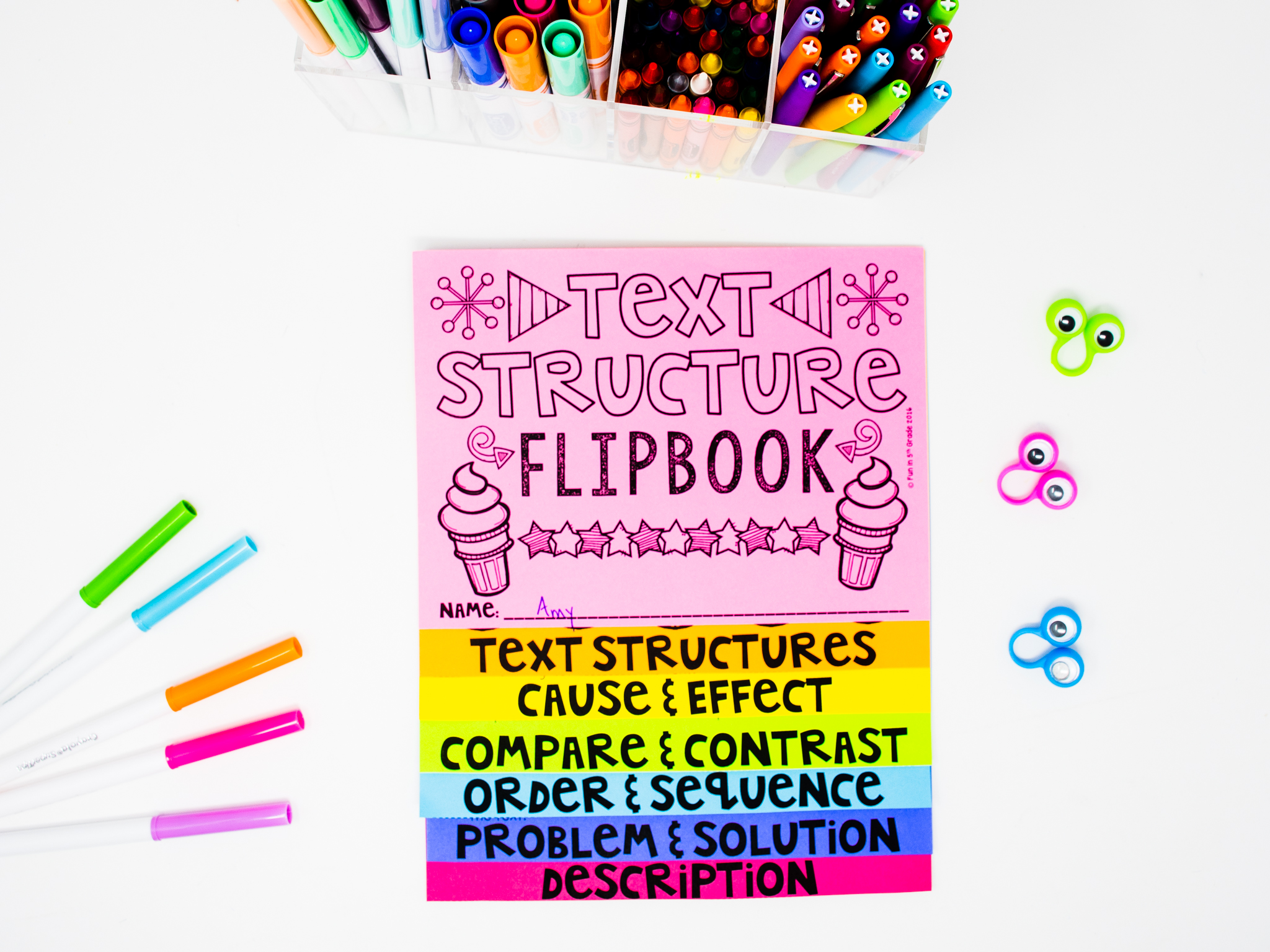
Remember, we are not done learning about text structure. We are just introducing it, so having good resources for students to use as they continue learning is really important.
The Text Structure Flipbooks are meant to be a powerful and constant companion for students as they continue to learn about text structure and encounter examples throughout the year. Spend these last two days making sure that these flipbooks are fully filled out and that all the notes students have taken over the last five days find their way into these colorful little books.
If you have time, maybe consider using a second Google Form Sticker Activity to re-assess students to see how much their understanding has grown over the last five days.
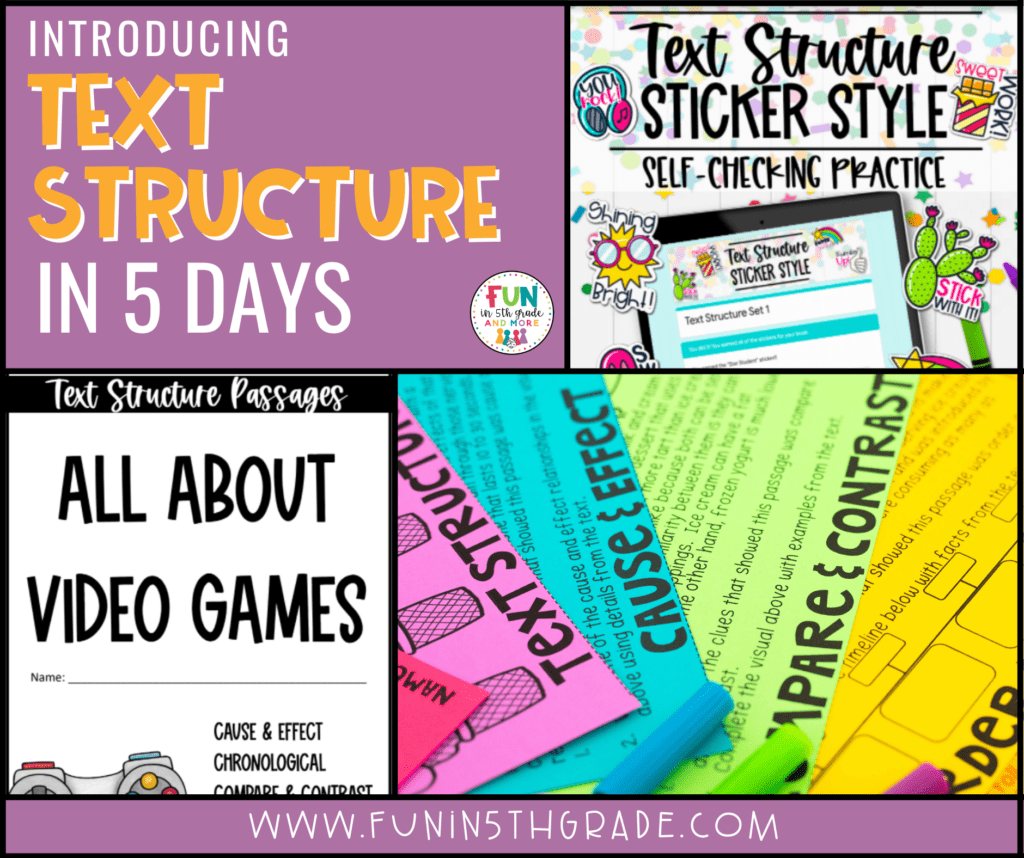
These first 5 days (like text structure) are just the beginning. This information will be built upon and used as a rung to help students reach many higher points in their reading comprehension climb.
As you continue to plan out your year from here, consider reading about a few helpful hacks that will make teaching text structure easier in this blog post, and make sure to grab your copy of the Video Game Text Structure Passages here!
